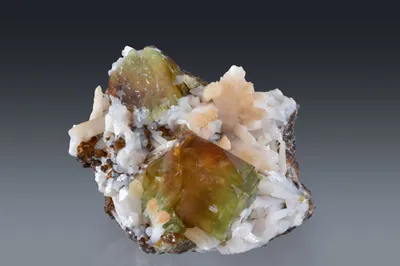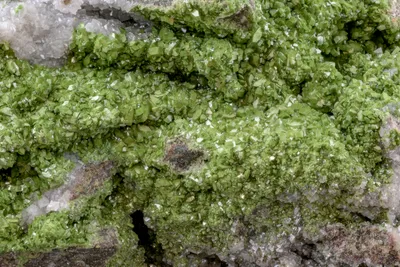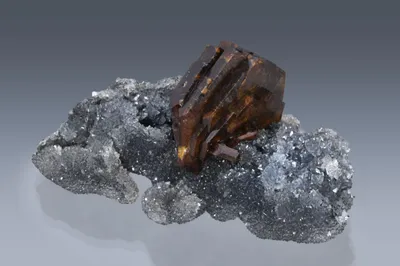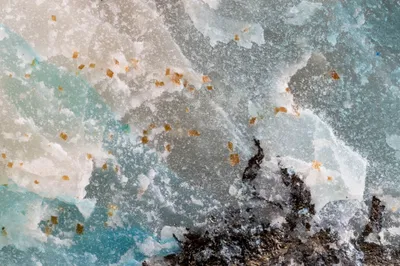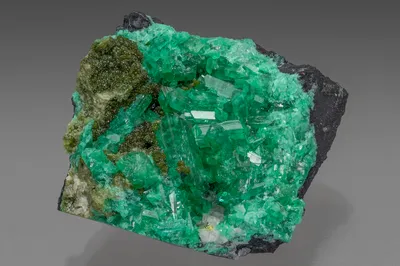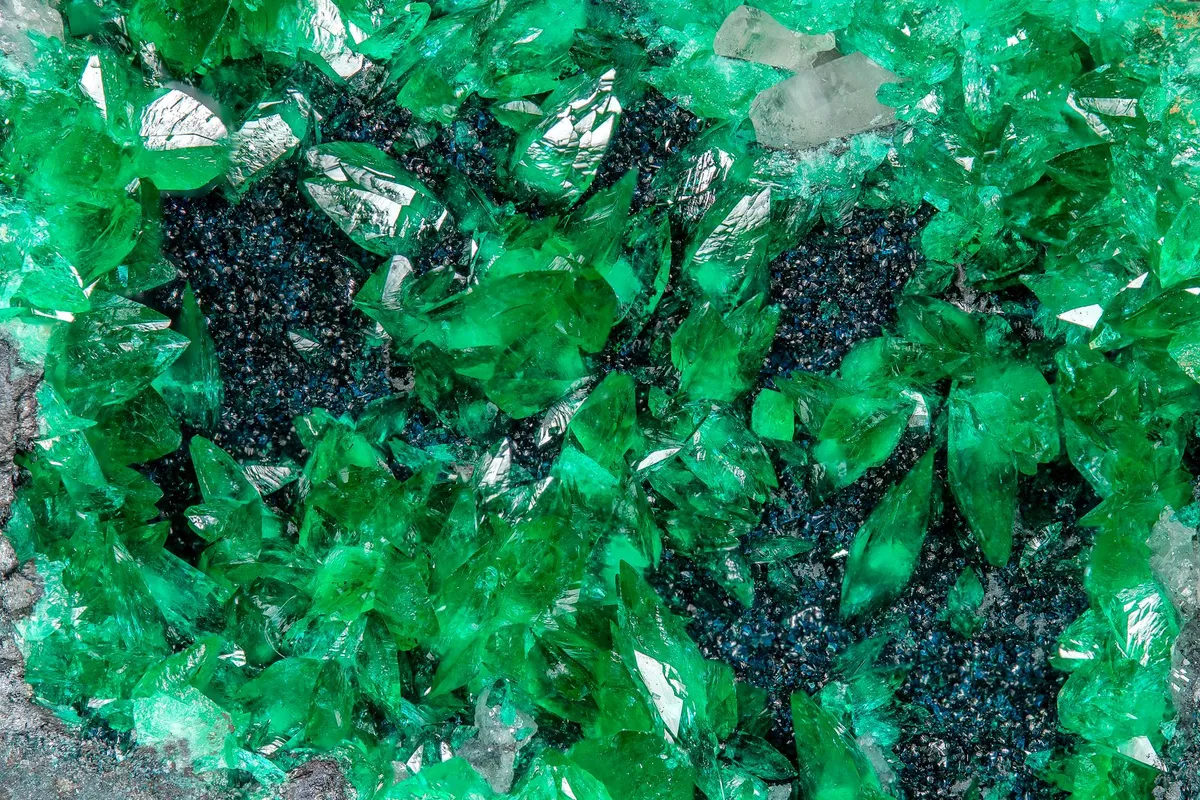
Image Credit: John Schneider
Mineral Species
Keyite
Type Locality
Yes
Composition
Cu2+3(Zn,Cu2+)4Cd2(AsO4)6(H2O)2
Crystal System
Monoclinic
Status at Tsumeb
Confirmed (type locality)
Abundance
Extremely rare
Distribution
Second oxidation zone
Paragenesis
Supergene
Entry Number
Species; TSNB193
Type Mineralogy
The discovery of keyite is credited to American mineral dealer and Tsumeb specialist Charles (Charlie) Locke Key (1935-2021). Sometime in the early 1970s while visiting Tsumeb, Key purchased a consignment of zincolivenite specimens, all from a single second oxidation zone pocket, with zincolivenite occupying vugs in tennantite ore. While he was preparing the specimens for sale, he noticed minute blue crystals of an unidentified mineral and sent them to Peter Embrey at the Natural History Museum in London for analysis (Southwood 2022d). Embrey initially thought they were stranskiite, but the cadmium content and monoclinic symmetry showed them to be a new mineral. Keyite, IMA 1975-002, was described by Embrey et al. (1977b) and named for its discoverer. Cooper and Hawthorne (1996) resolved the crystal structure and revised the formula, most significantly to show that keyite contains essential cadmium. Further refinement was provided by Malcherek and Schlüter (2013) who noted that while keyite is metrically monoclinic, ordering of copper atoms and H2O within a channel of the mineral’s framework structure lowers the symmetry to triclinic. Type material is conserved at the Natural History Museum, London (catalogue number BM.1973,236). A second specimen (BM.1975,660) is also mentioned in the original description and can be regarded as a co-type.
General Notes
Keyite was the first-described natural arsenate of cadmium. Both acicular and equant crystal habits are observed, though not in combination. Acicular crystals typically have a lower (vitreous) lustre, while the equant crystals are adamantine and gemmy. The colour of keyite has been variously described as "deep sky-blue" (Embrey et al. 1977b); "connellite-blue" (Pinch and Wilson 1977); "deep greenish-blue" (Keller 1984); "sky-blue" (Gebhard 1999) and bright blue to darkish green-blue" (Von Bezing et al. 2016). Despite its striking colour, keyite is easily overlooked because of its crystal size. Its most common associate is zincolivenite.
The precise location from which the holotype specimen was recovered is not known, although it is unquestionably from the second oxidation zone and consists essentially of keyite microcrystals associated with emerald-green zincolivenite on a tennantite-rich sulphide ore. The co-type specimen (BM.1975,660, mentioned above) was obtained from dealer Luis Texeira Leite in 1975 and is distinguished from the holotype by the association of colourless-white schultenite crystals (to 20 mm; Embrey et al. 1977b). It is probable that the two specimens are from different locations in the mine. According to Von Bezing et al. (2014) the 1975 discovery (with the schultenite association) originated from 28 level. Gebhard (1999), however, noted that co-type material was recovered from 30 Level, also in the second oxidation zone.
Keller and Bartelke (1982) reported keyite as a component of the East 9 Pillar assemblage on 31 Level.
Gebhard (1999) stated that "The co-type specimen of keyite from the Key collection has green tabular crystals [of metazeunerite] up to 6 mm size on adamite and keyite." It should be noted, however, that Embrey et al. (1977b) make no mention of this association in their original description of keyite and it is questionable whether the specimen described by Gebhard (1999) should, strictly speaking, be regarded as co-type material.
Associated Minerals
adamite; austinite; baryte; bayldonite; chalcocite; claudetite (?); cuprite; gaitite; helmutwinklerite; hörnesite; johillerite; koritnigite; köttigite; ludlockite; metazeunerite; o’danielite; prosperite; quartz; schultenite; spertiniite; tennantite-(Zn); zincolivenite

